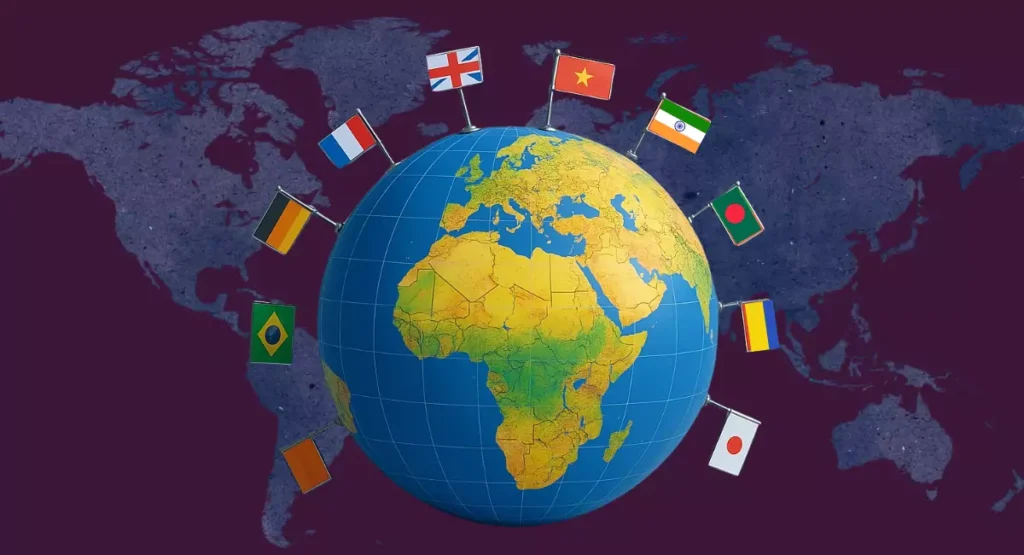International SEO is about making your website work well for people in different countries or who speak different languages. Imagine you have an online store selling shoes. You want people in the USA, Japan, and Spain to find your website when they search on Google. International SEO helps you show the right version of your site (like English for the USA, Japanese for Japan, or Spanish for Spain) to the right people, so they can easily find and use it.
It’s like setting up signs in different languages and countries pointing to your shop, while also making sure the shop feels familiar and welcoming to everyone who walks in.
Checklist for International SEO
Here is a simplified checklist to get started with International SEO:
Define Your Target Countries
- Pick the countries where you want people to find your website.
- Example: If you sell winter coats, you might target Canada and Russia, not tropical places like Brazil.
- Why it matters: You don’t waste time trying to reach everyone—just the people who need your stuff.
Choose the Right Website Structure
Decide how your website’s address (URL) will look for different countries or languages.
- ccTLDs: Separate websites like example.ca (Canada) or example.jp (Japan). Good but expensive.
- Subfolders: One website with sections like example.com/uk or example.com/es. Easiest for beginners.
- Subdomains: Like uk.example.com. A bit harder to manage.
Tip: Start with subfolders (example.com/fr). It’s simple and Google likes it.
Optimize your website with 1 click ⬅️👆🏾
Use Hreflang Tags
- Add a small piece of code to your website to tell Google, “Hey, this page is in English for the USA, and this one is in Spanish for Mexico.”
- Example:
- Why it matters: Without this, Google might show your Spanish page to someone in Japan by mistake.
Research Local Keywords

- Find out what words people use to search in each country.
- Example: In the USA, people search “sneakers,” but in the UK, it’s “trainers.”
- Tip: Use free tools like Google Keyword Planner to find these words.
One Language per Page
- Don’t mix English and French on the same page. Keep it clean.
- Why it matters: Google and users get confused if a page is half in one language and half in another.
Internal Links Should Match Language
- If someone’s on your French page, only link them to other French pages, not English ones.
- Example: example.com/fr/about links to example.com/fr/contact, not example.com/en/contact.
- Why it matters: It keeps the experience smooth for the user.
Install a Content Delivery Network (CDN)
- Use a service (like Cloudflare) to make your website load fast in every country.
- Why it matters: If your site is slow in Japan, people will leave before it even loads.
Prompt Users to Choose Language
- Don’t force people to a language based on where they are. Let them pick.
- Example: Show a little pop-up saying, “Choose your language: English, Español, Français.”
- Why it matters: Someone in Spain might want English, not Spanish.
Build Backlinks Locally
- Get other websites in your target country to link to you.
- If you’re targeting Germany, get a German blog to mention your site.
- Tip: Start small—ask local friends or businesses to link to you.
Get your competitor’s backlinks
International SEO Reference Resources
Guide: Ahrefs International SEO Best Practices
Step-by-Step Action
Pick Your Languages: Do you want English and Spanish? English and Japanese? Start with 1-2.
Set Up Subfolders: If your site is myshoes.com, add myshoes.com/es for Spanish.
Write Content: Make pages that fit the language and culture. (Example: Talk about “football” for the USA, but “futbol” for Spain.)
Local Currency and Units: If you sell stuff, show prices in local money (e.g., USD for USA, EUR for Europe) and use local measurements (e.g., miles in the USA, kilometers in Europe).
Cultural Differences: Colors, holidays, or phrases might mean different things. Example: Red is lucky in China but can mean danger in the USA.
Test Speed: Use Google PageSpeed Insights (free!) to see if your site is fast in other countries. Increase your website speed ⬅️
Check Results: Use Google Analytics and Search Console (free!) to see if people from other countries are visiting. Setup Google Search Console ⬅️
Is This Everything?
No single explanation can cover everything about International SEO because it depends on your website and goals. But for a beginner, it is a strong start. Once you’ve got the basics working, you can dig into advanced stuff like dealing with duplicate content or optimizing for local search engines (e.g., Baidu in China).

